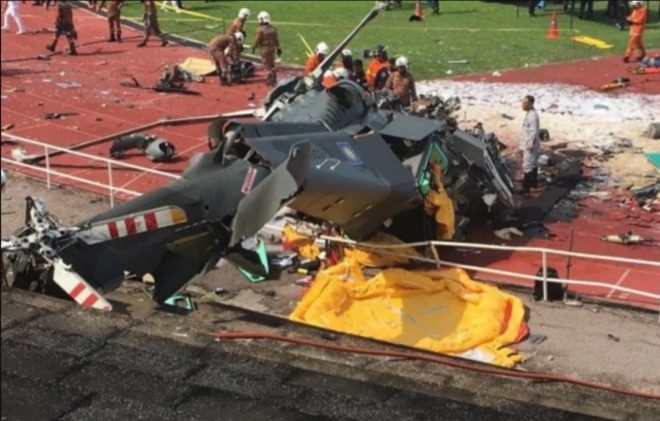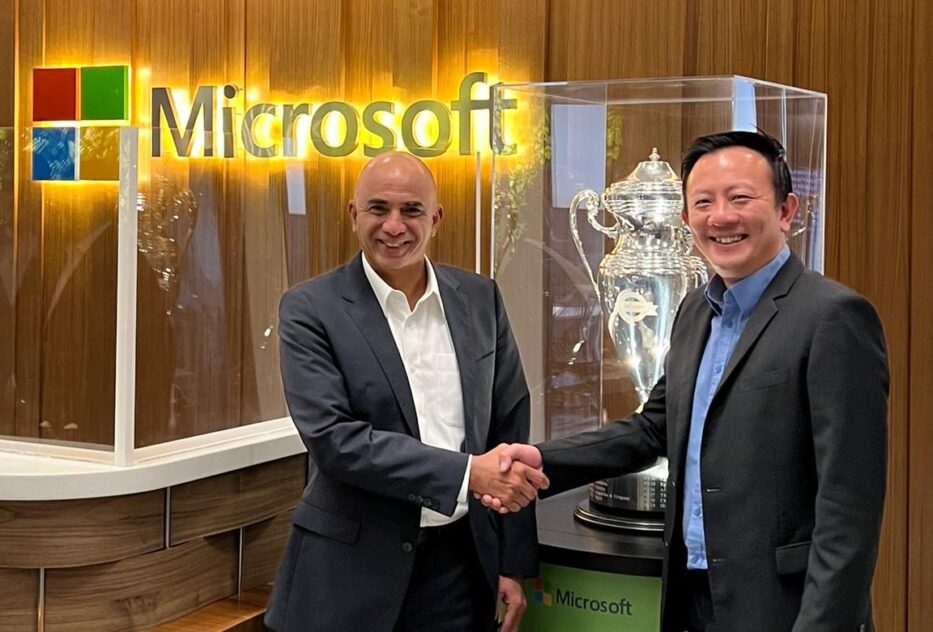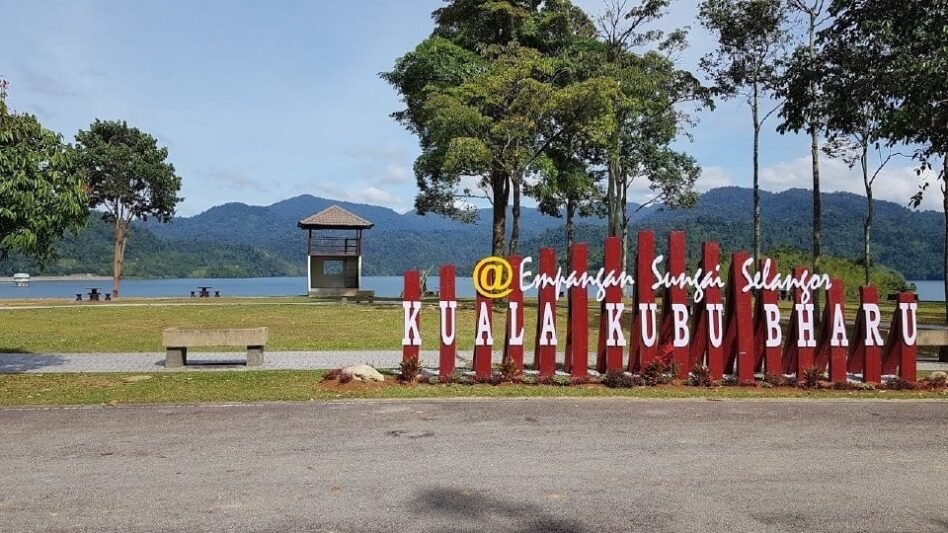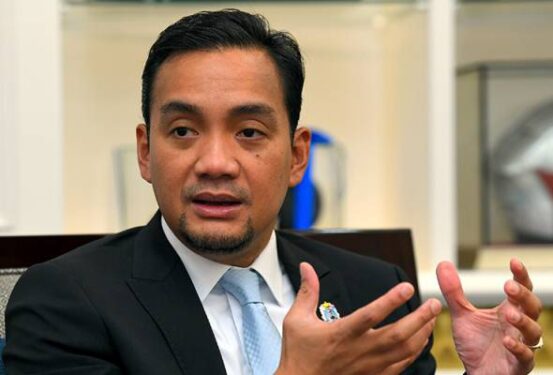By V Sanjugtha
CREATING visions and corridors is Malaysia’s blueprint for prosperity and economic development. But too often these plans are tied to politics, and bank on the omnipotence of the political figures of the day. Unfortunately as their omnipotence fizzles out and they fall out of power, the focus of the economic development plans are shifted in the direction of the new order.
In the past three decades, the nation went from Vision 2020 to National Transformation 2050 (TN50) to the Shared Prosperity Vision 2030 (SPV 2030). After a week-long power tussle, the newly appointed Prime Minister Tan Sri Muhyiddin Yassin has pledged to continue the SPV 2030 plans.
To support this new vision, several economic thrusts had been identified and one key catalyst of growth for the nation is now the Malaysia Vision Valley 2.0 (MVV 2.0), located within proximity of Port Dickson, the constituency of the once prime minister-in-waiting, Datuk Seri Anwar Ibrahim.
So will the spotlight remain on MVV 2.0 now that Pakatan Harapan no longer rules, or will another “vision” or “corridor” move to the forefront?
The problem that comes with change in leadership is the uncertainty and shift in policies, visions, plans and economic thrusts that the people have already invested in.
MVV 2.0 is touted to be the only other region with a comprehensive development plan, apart from Iskandar Region. It was formed to be the economic catalyst for the 11th Malaysia Plan and is also a part of the National Physical Plan 3 and Structure Plan of Negeri Sembilan, while complying with Strategic Thrusts 1, 2 and 3 of the SPV 2030.
Perhaps key to its rising popularity is its role in the Fourth Industrial Masterplan and the upcoming 12th Malaysia Plan, which essentially will operationalise the SPV 2030. MVV 2.0 is supposed to be an extension of Greater KL, decentralising development as GKL becomes increasingly saturated.
Wasn’t that also the reason the purpose-built administration centre, Putrajaya was created? Along with Cyberjaya, which was supposed to be our version of the “Silicon Valley”. Today, Cyberjaya appears on the list of areas with an alarming number of unsold property, post-Vision 2020 and Multimedia Super Corridor heydays. Another frenzy gone awry is the Iskandar Region, which also has a large number of high-end luxury homes sitting on the auction property list.
A property consultant tells FocusM that MVV 2.0 could have been “the one” – Malaysia’s success story of a development area done right. However, he says the timing could not be more wrong.
Spearheaded by Sime Darby Properties, there could not be a development with stronger public-private partnership than the MVV 2.0. Yet, potential investors tell FocusM they can’t shake off the uncertainty of the area’s future, due to the political situation in the country.
“Will the commitment and interest from the government of the day continue? My fear is the repeat of the Cyberjaya/Putrajaya scenario,” a potential investor confides, referring to the slower than expected economic growth in the area.
Another investor points out that all these initiatives start out in high gear and gain momentum up to a certain extent, then it begins to slide downhill, probably because attention is diverted to the development of another area. MVV 2.0 is one of the 17 Promoted Development Zones.
It is expected to have a gross development value of about RM640 bil and aims to attract investments to the tune of RM300 bil over a span of 30 years, creating 1.4 million jobs with a 6-7% annual contribution to gross domestic product growth.
The development will be divided into five clusters: Central Business District which will cover Seremban, Ampangan and Rasah; Nature City (Pantai and Lenggeng); Edu-Tech Valley (Labu and Setul); Wellness, Eco and Agro Tourism (Port Dickson, Kuantan, Linggi, Sirusa); and New Liveable Township (Jimah).
So, do investors forge ahead abetting the new and improved MVV 2.0 with its shiny promises of riches, or do they wait and see how it will all pan out?
Checking the right boxes?
When Cyberjaya/Putrajaya and Iskandar Region were initially launched, there was the much needed media attention, stimulus and incentives to attract investors. And, it’s no less with MVV 2.0.
The area received an enormous thrust from the Ministry of Transport’s decision for a strategic shift in the East Coast Rail Link (ECRL) location from Bangi to Nilai, within the MVV 2.0 zone. Thumbs down for the early birds who snapped up property in what they thought would be Transit Oriented Development (TOD) areas in Bangi.
Citing the geographical disadvantages of the Bangi location, the move to Nilai is expected to unlock the value of Negeri Sembilan and the country by creating a new avenue or platform to drive economic growth and job opportunity as the rail transport will not only ease the movement of goods but human capital as well.
The MVV 2.0 has as its head Datuk Redza Rafiq, CEO and director, investments, Sime Darby Properties.
“We are talking about an evolutionary strategic initiative to bring Negeri Sembilan into the radar as a high-tech economic zone. The vision is for this area to become a metropolis that is inclusive and clean, with clean efficient high-tech industries to be located here,” he reveals at an open forum with potential investors at XME Business Park sales office in Nilai, the recently launched industrial park which is the first development in MVV 2.0.
Redza adds that the grand plan for the area [MVV 2.0] is also to ensure it has safe, liveable and affordable townships, integrated and efficient transportation system and a “nature in the city” concept.
Also present at the forum, Ishmael Ho, CEO of Ho Chin Soon Research, opines that MVV 2.0 is positioned as the “locational centre of gravity for the Klang Valley”. He points out that the natural geographical barriers to the west, which is also Malay Reserve Land, puts Nilai in the obvious path of growth as GKL gets increasingly saturated.
Agreeing on the area’s potential, Allan Sim, executive director of Capital Markets, Knight Frank Malaysia points out that its location adjacent to and south of GKL places it with a strategic location, with proximity, connectivity and inter-relationship with the Greater KL region to capture the southern growth corridor.
“Apart from that, MVV 2.0 is connected to the North-South Expressway which acts as a backbone that connects the interstates from Thailand up north all the way to Singapore down south,” he stresses.
Sim adds that with a master plan in place, MVV 2.0 is a project spanning across 30 years making the development “well-thought” rather than an ad-hoc based planning. He adds that as a state-led project with a comprehensive development plan driven by a public-private partnership with MVV secretariat as the special steering committee, it has credibility.
Ishmael also points out that MVV 2.0 is different from previous development regions as it has already established itself as an industrial region and has been rapidly attracting residents due to its proximity to the Klang Valley.
He notes it is one of the few areas that boast three large retail giants within proximity of each other: AEON, Tesco and Giant. This, he notes, is testament to the population in the surrounding area.
“There are a lot of townships here, the workforce makes for a crucial element in the success of any development region, especially when driven by industrial activity. Many industrial areas are unsuccessful as they are unable to attract a workforce, sometimes due to their location,” he adds.
Driven by industrial play
Another factor that is piquing property consultant and investor interest is its focus on industrial activities. Redza reveals that the plan is to ensure MVV is “done differently”, broaching an industrial angle rather than a township. This also prompted the name change, adding the 2.0 as a trendy emphasis on its repositioned vision.
According to Redza, hi-tech manufacturing will be the main driver of the area, with other manufacturing areas identified as supporting activities. These include innovative, customised, distributed and mass customisation activities.
“The industrial element will be complemented with supporting economic drivers such as Specialised Commercial Services like logistics, to support the e-commerce growth and wellness tourism,” he elaborates.
While Nilai is home to nine industrial parks, Sim of Knight Frank points out that the MVV 2.0 gets a leg-up being a state-led project whereas the others are private efforts. MVV is also the first managed industrial park in the area.
He reckons that Parcel A, comprising High Technology & Industrial Park, being a 2,800-acre project, is likely to be done in phases. The Industrial sector within or adjacent to that area has been generally doing well with high occupancy rates.
“Up to this point of time, half of the first phase has been taken up within a month of its soft launch with interest pouring in from different business industries from logistics and warehousing, food & beverage (central kitchens), engineering, food processing and packaging and metal fabrication,” Redza notes.
“The well-planned infrastructure, amenities and facilities provide good access and connectivity,” he adds noting that there is also a ready talent pool with graduates across the state from INTI Nilai, Nilai University, Institut Teknologi Putra Seremban and many more.
MVV will have a network of roads and highways to boost interconnectivity. According to Ishmael, there is the Seremban Middle Ring Road Phase 3, Mantin-(LEKAS)-Labu highway and Nilai-Labu-Enstek-KLIA highway, of which Phase 1 is under construction with Phase 2 coming up, a project undertaken by the federal and state governments.
Not reinventing the wheel
Nilai has been a part of an industrial eco-system for more than 30 years. As the pressure for industrialisation intensifies, it gives rise for old, traditional industries to upgrade and modernise into the high-value economy.
“This is evolution that Nilai is a part of, in the centre of a location that has had the benefit of an industrial economy for the past three decades. This creates a platform to leverage on engineering-based skill sets and logistics expertise that have evolved over time,” Redza points out.
The idea is to build new economic drivers and to attract new companies to come in, building on the existing traditional businesses.
“It makes economic sense to leverage on these traditional businesses that are already here by energising industrial activities, it provides another opportunity,” explains Redza.
With the proposed ECRL station located within the MVV area, the plan is to have a staging point for cargo from all the industrial areas in the Nilai/MVV area to use ECRL as a launchpad because 70% of ECRL income is expected to come from cargo. There will be a conscious effort to use the station for both cargo and passengers.
Redza reiterated that much of the plan is still with the government, with Sime Darby not “privy” to the information yet. However he reveals that the ECRL station’s function will be similar to the Padang Besar initiative.
“The whole system will function like an inland port, using the rail infrastructure to launch products,” he says.
Green is the new black
Investors today are seeing green. The carrot that draws them in is the commitment to environmental sustainability, renewable energy and recycling activities. Nevertheless, the area leans heavily towards the industrial sector as a major economic thrust, raising environmental concerns for residents.
Given previous widely publicised environmental issues ranging from illegal dumpsites to toxic waste spills in rivers, the presence of industrial factories always raises concern. Studies on environmental sustainability and the industrial sector’s role in preserving a safe and clean environment has called for the need for better understanding of the links between environment and human security.
“Understanding the growing interest in the environment, we have deliberately planned a green agenda from ground up because this is what investors want. It’s no longer build and they [investors] will come,” says Redza.
He reveals that investors today want an assurance of consistency in environmental sustainability; they want to test the air quality to be assured of commitment towards the environment.
“The XME Business Park is the first of its kind to integrate green principles from bottom up. At inception, we have obtained Green Tech Malaysia to be involved,” he adds.
Sim of Knight Frank notes that part of Phase 1 of MVV 2.0 is designed for hi-tech industrial parks to promote clean and green and high-tech sectors, in particular.
“The launch of MVV 2.0 also came with publicity of MVV 2045, a public document that sets out the land use zoning and development initiatives, and outlines action plans for environmental enhancement, accessibility, infrastructure, liveability and industries within the MVV 2.0 development,” he says.
Sim draws parallels of MVV’s plans to Zhangjiang Hi-Tech Park located in the centre of Pudong New Area, Shanghai. He explains that the hi-tech park is divided into several functional areas, which include technical innovation area, high-tech industrial area, research and education area, and living area.
“Going by this, we see that the master developer and MVV secretariat will oversee the project as a governing body to ensure proper compliance to the proposed use. The first phase of 27,000 acres has been well segregated and accounted for as a part of a large masterplan,” Sim opines.
Overcoming the challenges
It’s not the best of times to attract investors, and it just got rockier with the global spread of the Covid-19 virus.
According to Sim, the pricing strategy would have to be competitive enough to tune into the investor radar. As this is a new development, he points out that the pricing structure is a key element in attracting investors, whilst justifying the initial investment cost for infrastructure.
A lawyer familiar with industrial space deals in Nilai points out that while there is increased interest among local individuals on industrial space, the high entry price point is a key factor. She points out that despite the proximity, Sendayan Tech Park is trending at a lower selling price.
Factory units at Sendayan Tech Park start at about 1,440 sq ft, and are currently trending in the market for about RM169-172 per sq ft. Units at XME Business Park have a built-up ranging from 5,600 to 29,000 sq ft with prices starting from RM2.5 mil to RM18.5 mil or RM446.40 to RM638 per sq ft.
Sim also believes that new initiatives need to be introduced into the area to boost appeal and ensure sustainability.
“There needs to be an increased effort to educate and create a higher level of awareness among not only the locals but largely to the foreigners on the factors that set apart MVV 2.0 in the market,” he opines.
Sim thinks it is crucial to ensure the MVV 2.0 initiatives appeal to the investors when compared to the conventional sought-after industrial area. He also sees the need to create supporting amenities to achieve more holistic development in the area.
As a promoted development zone of the federal government, MVV 2.0 will offer investors tax incentives via Malaysia Investment Development Authority (MIDA) and tax and non-tax incentives under Green Tech provided they are in compliance with its requirements. It is also believed that MVV 2.0 is in discussions with the Ministry of Finance to obtain location-based incentives, which will be additional sweeteners to draw investors. — April 14, 2020









